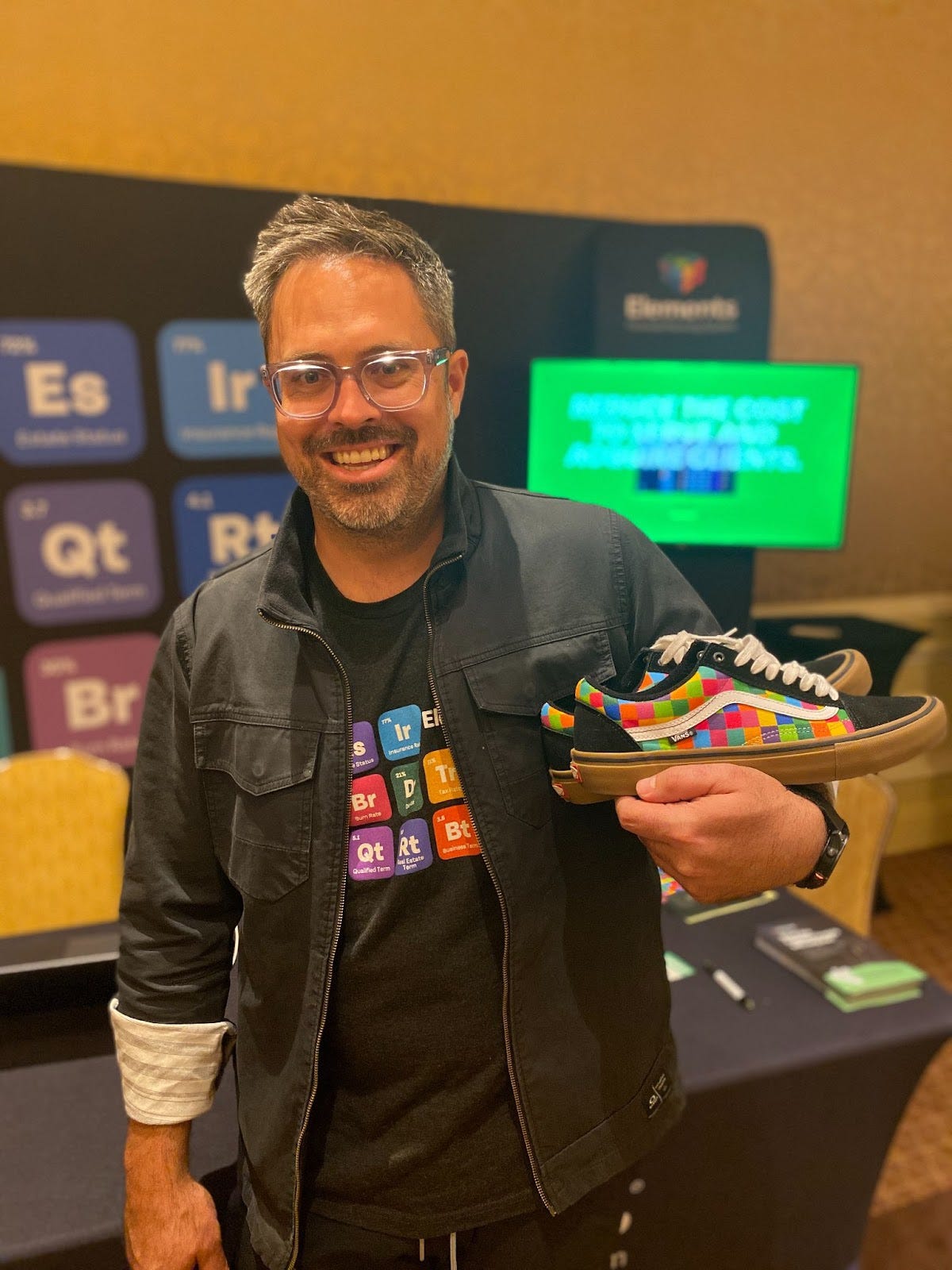January 2023 marks the completion of a really big fundraising milestone for Elements. I’ll be honest—few things have been more difficult than raising money during the fall of 2022.
I spent a lot of energy, but I learned SO much. It’s strange how walking away from something so brutal, you can feel so confident. Ample rejection, followed by eventual success, increased my confidence and optimism.
I know there’s a ton of work ahead, but everything feels substantially de-risked, now. And not because there is money in the bank. It’s because of the collective knowledge we have about where to go, what to do, and how to get there. The work my team and I did to get funded seems to have clarified our vision beyond what the market required from us twelve to eighteen months ago. We left the round feeling very focused and aligned, and our company has never been stronger. What a pleasant surprise that is after pushing through all the pain.
And, as is typical with any startup, it’s kind of funny that only a few months ago we were almost completely out of capital. That’s just the game you play. And depending on how fast we grow, I’ll probably be doing this again in twelve to eighteen months.
That variety is fun for me, but really draining as well. I enjoy the shift I can make to focus on product, team building, sales, and leveling up our organization with new hires. But I also look forward to the next time around when hopefully I can raise money with a bit more wisdom.
Before I share my learnings, I wanted to give you some context about our business so you could know if anything I’ve learned even applies to your situation. The best advice is always contextual, and as niche as possible, so I hope this context is helpful.
The fundraise was a $5M round with a new outside lead investor named Flyover Capital. We launched our full product in May 2022, and now have over $1M in ARR (annual recurring revenue) across 300 financial advisory firms, with even more advisors inside of those firms who use our product. We are reaching thousands of end clients, probably 10k+, by end of year. That impact is really inspiring to me. Most of our traction to date is in the SMB segment of the market (1-5 advisors). We've recently become SOC 2 compliant (a test you have to do for people to take your security seriously). We just closed our first mid-market contract with nearly 100 advisors in a firm, and that was a massive deal for us. 2023 is about doing more of that. (Dentist Advisors (my RIA) is an example of that kind of business.)
Now let’s lean into the learnings:
Believe in your financial model, and paint a very clear picture for ROI to your investor. If you don’t personally have this skill set (I don’t) you’ll need to hire someone who does. But if you don’t understand your model, and if you don’t have confidence in your model, your pitches are going to feel a little unstable to discerning ears. When you’re starting, you don’t really know what to expect from your little startup. So the whole financial modeling thing feels a lot like preparing a “guess” that investors find palatable. Something that checks the box. But this time around, I had to have real confidence in my financial model. I had to believe it. More concrete headcount sequencing (e.g. a junior level dev starting in Feb 23’), and more confidence in each of our KPI’s. To the degree that I gained confidence in my financial model, I was able to convey a path forward.
Give yourself at least eighteen months. If you don’t have a LOT of confidence that you can go for eighteen months on the raise, you’re either not raising enough, or you need to cut your budget. Especially right now, going into a bit of a contraction, I’d be super careful. I thought I had eighteen months last time, and I realistically only had twelve to fourteen months. I didn’t estimate conservatively enough, and I overestimated a few of my numbers (for example, I assumed I would complete my MVP sooner last round, but we needed a few more features to get product market fit than I assumed).
Listen to all of the reasons you might fail. Wrestling with the real risks that investors were passing, rather than just the fear-filled doubts in my mind, felt infinitely harder than I thought it would be. They would spend weeks, or more than a month talking to us, interviewing our customers, analyzing our financials, and much more. And even after all that, they would pass quite often. When smart people do that to you, time after time, it starts messing with your confidence. But instead of walking away, lean into this. It will make you, your team, and your mission that much stronger.
Stay curious, open, and make sure you’re committed to learning– don’t be defensive. The hardest part of fundraising is hearing the very legitimate reasons for why you just might fail—and taking them seriously. Because the facts are quite honestly NOT in your favor. You will most likely fail. If you don’t, it’s because you were probably an incredible listener. And you got a ton of rejection that you took seriously. And then you just went back to work and fixed ALL of the things they said. Investors can send you conflicting messages. So as you listen, don’t give their ideas too much power, just stay curious, and ask one more question to one more person. I found myself going to the next pitch quite often, taking the last pitch’s concern, and trying to float it to the new VC to see if I could pattern match and separate the noise from the real problems.
Don’t stop pitching. One more contextual point: I pitched over 100 professional venture capital firms over the course of about four months. I had always heard that the most difficult thing in fundraising was dealing with a LOT of rejection. That’s hard, for sure. I don’t love it when someone criticizes something I’ve worked really hard on. You might even lose hope. It’s not the only thing, but volume really is important. Editing and revising, yes. But the main thing is to just keep pitching.
Lots of reasons have nothing to do with your product. The stock market decline and increasing interest rates and inflation made everything far more difficult. I was raising money close to Thanksgiving and Christmas as well. It’s just not an ideal time. And you don’t always get to pick which months you’ll need to raise. Remember that there are dozens of factors at play. I struggled with macro economic environments, investment conflicts (firms who had already invested in my space), funds that were at the end of their capital cycle needing to raise money themselves, and dozens of other factors that have very little to do with our company. It’s important to separate these issues from the very important, very real issues that can help you learn about what to adjust.
Looking back, I saw this general response show up quite a bit:
Hey man, there's just SO much to like about your company, but this market is on a free fall and the best deals are yet to come. You're an expensive, early stage company that is thriving in a bad market. We think we'll take our chances on better deals to come over the next six months.
If you happen to be raising right now, I feel for you. It is more difficult. But, you can’t control those things.
What can you control? Don’t stop pitching.
Elements had a great revenue growth story, great early traction, lots of happy customers, and a really efficient marketing and sales motion. Overall, we went into fundraising feeling super confident.
I left with an entirely different type of confidence. I feel appropriately humbled by the challenging market environment in which we find ourselves. I’m leaner, sharper, and very aware of how the odds are not in our favor.
And that is exactly where I want to be.
Keep going.






Love being a part of your team and following you through this incredible business you're building!
Love it Reese! Congrats on the raise!
Love Elements and excited about what’s to come with the new funding and continued development.
Also, great insights on the many challenges in building any business of value!